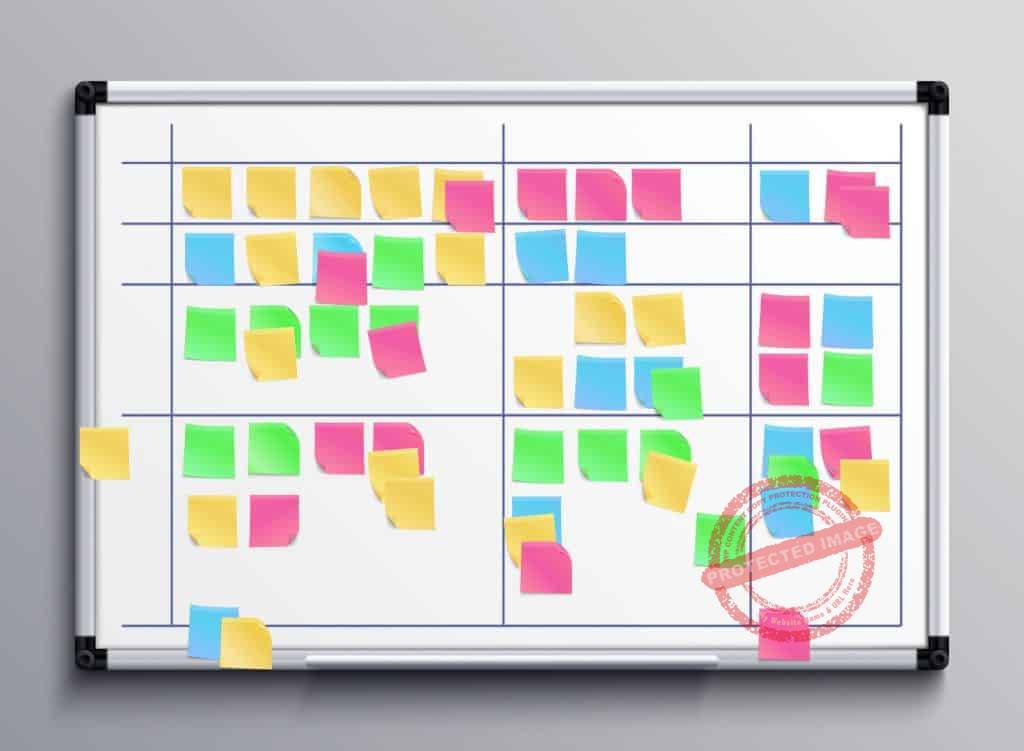Thinking of how to make sure that your business is running as smoothly, as effectively, and as efficiently as possible? It’s quite simple. Take a look at your time management strategies.
Time management is a productivity-oriented process. It involves planning how you’re going to spend your time, and consciously exercising this plan.
Through effective time management, you will learn to work smarter, not harder.
The purpose of practicing time management strategies in business is to increase efficiency, effectivity, and productivity.
When you have control over your time, you will be able to maximize the benefits of the activities you need to carry out.
This is even with the constraints of a limited time period.

It also ensures that you spend the most amount of time on projects that are important, and that you waste the least amount of time on projects that are not.
Benefits Of Effectively Managing Your Time
Effectively managing your time has three major benefits:
- It creates a work environment focused on effectiveness, goal-achievement, and constant improvement.
- It allows you to set goals and recognize which tasks and projects should be prioritized.
- Effective Time management helps to eliminate tasks and projects that are not of value to the business.
Furthermore, as you get better at managing your time to increase your work productivity, you will also increase productivity in other aspects of your life.

If you apply the same principles, you will be able to achieve a healthy balance between work, friends, family, hobbies, and personal interests.
In the modern workplace, it’s important to make every minute count.
This article will tell you about the three most effective ways to improve your time management strategies: the Pomodoro method, time blocking, and task batching.
Pomodoro Method

Developed in the 1980s by Francesco Cirillo.
The Pomodoro method is a time management technique that helps you get more tasks done in less time.
This method divides a day’s work into short 25-minute intervals, called Pomodoro, followed by a shorter break time.
Pomodoro is the Italian word for tomatoes, named after the kitchen timer (shaped like a tomato) that Cirillo used in developing this technique.
According to a research study published by Dr. Gloria Mark, if you get interrupted while doing a task, it takes an average of 23 minutes and 15 seconds for you to refocus.

Through the strict structure of Pomodoro, external and internal distractions are limited.
But, it still allows for breaks in between.
The process involves task planning, progress tracking and recording, processing and debriefing, and visualizing.
Six Steps Of The Pomodoro Method
According to Cirillo, this method consists of six steps:
Step 1. Identify A Specific Task You Want To Do.
No matter how small or large the task is, commit to giving it your full attention until it is completed.

Step 2. Using A Kitchen Timer, Set An Alarm For 25 Minutes.
Limit or eliminate all the possible distractions such as messages and emails, social media notifications, and other assignments.
Step 3. Do Not Multitask.
For 25 minutes, work on this task, and this task only.
If you remember something else you need to do, write it down, and set it aside for later.
Step 4. Keep Track Of Completed Tasks

When the timer sounds off, write a check mark on a piece of paper to celebrate the completed task.
Step 5. Take A Short Break
Get up from your desk, go for a walk, or grab a light snack in the break room.
For 3-5 minutes, do anything that gets your mind off of work.
Step 6. Repeat This Process Four Times.
After completing four Pomodoro checks, take a longer break for 15-30 minutes.
Reset the check mark count, then go back to step 1.

Pomodoro is easy and mechanical, making it one of the most popular time management strategies for any kind of task.
It takes advantage of the brain’s conditioned need for reward.
When you wind the timer, you set and confirm your intention to complete a task.
The ticking of the clock serves as a constant reminder of the task at hand.
The ringing of the timer marks the accomplishment, and the check marks the break.
These physical stimuli become linked to flow, focus, and productivity.
Mastering The Pomodoro Method

Like all techniques, the Pomodoro method can be mastered.
To refine the process, set out to practice the following objectives:
- Observe how much work, effort, and time it takes to complete a specific task. For example, on average, writing a 500-word reflection paper takes two Pomodoros.
- Practice guarding your Pomodoro against internal and external distractions. You can do this by decluttering your workspace, putting your phone on do not disturb, and using noise-cancelling headphones.
- From your previous observations, practice gauging how many Pomodoros it takes to complete a specific task.
- Use your Pomodoro time wisely. The 25 minutes should be divided into three sections. First, for 3-5 minutes, recap what you have accomplished so far. The second, to pick up where you left off and continue working. The third, for another 3-5 minutes, review what you have finished.
- Make a timetable for your to-do-list, and measure it in Pomodoros. This allows you to organize your workload, maximize your time, and free up your schedule for non-work activities.
- Set a personal goal, you will have more incentive to improve your time management strategies.
Benefits Of The Pomodoro Method

The benefits of the Pomodoro method are as follows:
- Because of the cyclical structure, you are encouraged to have a steady workflow.
- In eliminating your distractions, you avoid the pitfalls of wasting time and you become better at enhancing your time management strategies.
- Your daily, weekly, monthly, and yearly progress can be easily tracked. It will also allow you to see points of improvement.
- Having short and frequent breaks away from your desk improves your physical and mental health. Pomodoro prevents back pain, shoulder pain, carpal tunnel, and other desk-induced injuries. It also reduces procrastination, prevents burnout, and increases concentration.
- The timer and checkmarks give a sense of accountability and responsibility. It also gives you a sense of accomplishment for finishing a task.
- The completion becomes its own reward, and it becomes a motivation for completing future tasks.
- Pomodoro not only allows you to determine how much time a personal activity takes. This technique can also be applied to team activities in order to meet multiple goals in a more efficient and effective manner.
- Short, focused bursts of activity increase the quality of work while reducing estimation errors.
Time Blocking

In 2013, entrepreneur Abby Lawson popularized a time management strategy called time blocking.
Also called calendar blocking, it is a productivity method that allows you to schedule activities and tasks every hour of every day.
Time blocking combines the use of to-do-lists and calendars.
Although it was intended for personal use, it can also be applied to company time.
Through this method, you don’t focus on how you and your employees spend your time.
Instead, you focus on moving from task to task.
This strategy is an effective way to manage your time because it visually maps out your entire day.
How To Practice Time Blocking

To practice time blocking, observe the following steps:
- At the beginning of your workday, make a to-do-list of the most important tasks that each person needs to accomplish.
Following your main priorities, add the smaller, minor, day-to-day tasks.
Color-code these items:

- red for urgent,
- yellow for important,
- green for unimportant,
- blue for daily tasks,
- violet for weekly tasks,
- pink for monthly tasks, and etc.
To schedule your day from 9am – 5pm, first assign (or block) a 60-minute period for the red tasks.
Then, a 30-minute period for the yellow tasks, and 15-minute period for the green tasks.
Task Scheduling Tips:
- Use the green tasks as a transitional activity from one red task to another.
- Green tasks should mostly be menial tasks that do not require your full attention and concentration.

2. Focus more on finishing tasks, and less on finishing tasks on time. Time blocking usually does not go exactly according to plan. It works anyway because it’s a more disciplined and structured version of a to-do-list.
3. Through regular practice, you might notice a pattern to your productivity. Observe the time of day when you are most productive, and then block this time for the hardest and most challenging tasks.
4. Ideally, you should tackle the harder tasks early on the day. Your energy decreases as the day goes on, so try to schedule the easier tasks for later.
5. Time blocks that go on for four to five hours can be difficult to complete. Try breaking down one big task into smaller tasks, then schedule accordingly.
6. Set a block for breaks to prevent employee burnout.
7. As much as possible, do not over-block your schedule. Set an empty block for at least 60 minutes. This serves as an allowance period for unexpected emergencies and tasks that take up more time than is allotted in the schedule.

As with all strategies, time blocking works for some people, but not for others.
Improvement in time management strategies is a result of discipline and long-term practice.
For best results, stick to this plan for a minimum of thirty work days.
To find out if it’s working for you, track your productivity.
Observe whether it takes you more or less time to complete challenging tasks.
Also, notice if you feel more or less stressed out as a result of this strategy.
Benefits Of Time Blocking

The benefits of time blocking are as follows:
- Because you have to plan every minute, you will notice how much easier it is to find free time for recreation, social life, and personal activities.
- You can also include your long-term goals in your time block. Try breaking it down into smaller tasks, so that every day, you are one step closer to your goal.
- Focusing on harder tasks when you are at your most energetic and most creative increases the quality of your work. Strategic time blocking offers room for improvement and further learning.
- Because every minute is accounted for, you will notice time wasted, misused, and underutilized. You can solve this problem by making necessary scheduling adjustments or delegating to your employees.
- You will find out the strengths and weaknesses of your employees, depending on how much time it takes them to complete a certain task.
- When tasks are pre-planned, it reduces the mental effort it takes to switch from one task to another. This, in turn, reduces instances of low productivity and procrastination.
- Time blocking also trains you to reduce the impact of workplace distractions. For example, by blocking time for answering phone calls and replying to emails, you won’t have the frequent need to check your phone.

During the first few days of practicing time blocking, you might feel limited or pressured by the time constraints.
But the stress of a rigid schedule might cancel out the productivity of the program.
To enjoy the benefits of time blocking, you have to remember that you do not have to follow the clock to a tee.
Make a schedule that is focused enough that it prioritizes your work, but is also flexible enough to allow for unexpected circumstances.
Task Batching

Also known as task grouping or batch processing, task batching is a strategy that optimizes your time, focus, and effort by grouping related tasks.
This method requires you to divide your tasks into more specific categories.
Think of task batching as time blocking on a larger, more organized scale.
Task batching is the opposite of multitasking.
A regular workday might involve any number of tasks, such as writing quarterly reports, responding to calls and emails, and setting up meeting and appointments.
You might feel productive when you’re accomplishing many tasks at the same time; however, research proves the opposite.

What you call multitasking is actually task-switching.
In the long run, task-switching is a costly habit.
When you jump from one task to another, your brain takes time to adjust and focus on your current activity.
It also increases the chances of making mistakes, no matter how complex or simple the task is.
In a day, task-switching can cost you up to 40% of your productivity.
Task batching is a radical solution to the problem of multitasking.
Essentially, it allows you to organize your schedule based on categories.

Usual categories include:
- writing (researching, writing drafts and pitches, writing content)
- editing (proofreading and revising)
- administrative (making and sending invoices, doing taxes, managing employees, scheduling and managing projects)
- communication (posting on social media, find new clients, answering phone calls, emails and messages, and other correspondence)
- personal (errands, family activities, recreational activities, home, and social responsibilities, chores, and duties)
Maker And Manager Days

One recommended model for task batching is alternating maker and manager days.
‘Maker’ refers to tasks that require creativity.
For example, during maker days, you will only do writing and editing tasks.
In contrast, ‘manager’ refers to tasks that are organizational.
During manager days, you will only do administrative, communication, and personal tasks.
Benefits Of Task Batching

The benefits of task batching are as follows:
- Instead of having multiple tasks, you have one or two clear agendas for the day. You will have more focus and concentration to complete these agendas. If you are focused enough, you will enter into a state of constant productivity and uninterrupted flow.
- Task batching saves you time by eliminating or decreasing instances of task-switching. It also saves preparation time and setup costs.
- Through task batching, mastering a skill with 10,000 hours of practice seems more possible. By continuously working on a certain task, you will improve your ability to perform them. It also helps you build a daily routine that you can get used to.
- If you apply long-term task batching to your life, it will not only teach you how to improve your time management strategies. It will also train you to plan a schedule and discipline you to stick to it. Task batching can help you achieve major, long-term goals.
Summary

To review, this article discussed three of the most effective time management techniques you can use – the Pomodoro method, time blocking, and task batching.
The Pomodoro method uses a timer to divide your workload into 25-minute intervals, followed by a 5-minute break.
The 25-minute interval, called a Pomodoro, is divided into three parts — recap, resume, and review.
This method teaches you ways to improve your time management strategies by training yourself to only focus on one task.
Your hard work will then be rewarded by a period of rest.

Time blocking is a productivity strategy that can help you save time by accounting for every minute of your day.
Through time blocking, you will set aside or block your most productive hours for the most urgent priorities of the day.
This strategy teaches you that your productivity should be less about keeping to a schedule, and more about completing a task and moving to the next.
Task batching combines a calendar and a to-do-list.

In short, it is a more specific version of time blocking.
By task batching, you group tasks according to certain categories, such as writing, editing, administrative, communication, and personal.
Every day, you will only do one batch.
This method saves time by reducing the cost of task-switching.
By working on one batch continuously, not only do you enter a state of focus and flow, but you also get better at performing a task at a much faster rate.
With all these techniques, you will be a master of time management in, well, no time.
Click on Buy Now For a PDF Version of This Blog Post
 |










